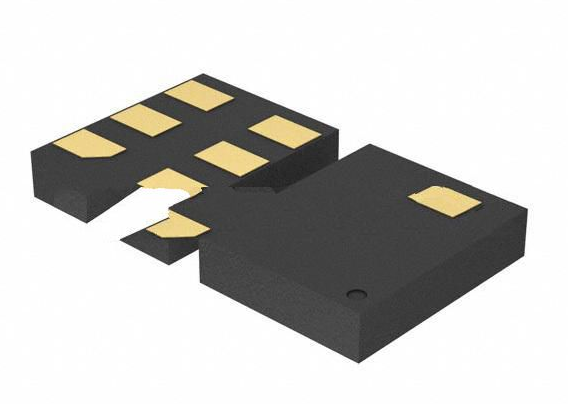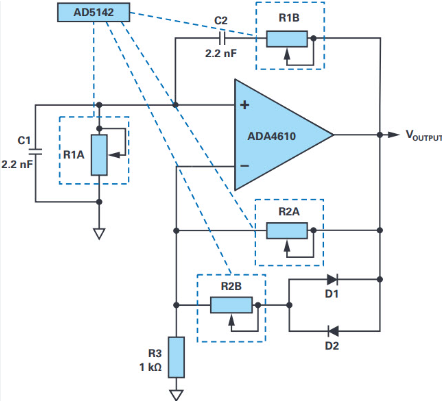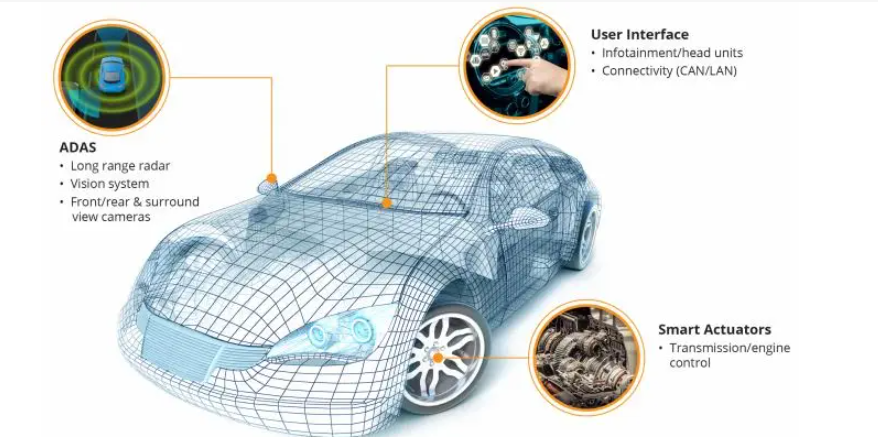What is Programmable Oscillators?

What is Programmable Oscillators?
Programmable oscillators are electronic components designed to generate a range of frequencies with a high degree of accuracy. Unlike fixed-frequency oscillators, which are limited to a single output, programmable oscillators allow the user to set the desired frequency within a defined range. This makes them incredibly useful in applications where the frequency requirements might change or where precise synchronization is necessary. Programmable oscillators find their place in everything from telecommunications systems and industrial machinery to consumer electronics and automotive components.

These oscillators can be adjusted during their production or even after they are installed, making them adaptable to various needs. The ability to reconfigure the frequency without replacing the hardware makes programmable oscillators a smart choice for projects that require long-term flexibility and precision.
How Do Programmable Oscillators Work?
At the heart of a programmable oscillator is a resonating element, often a crystal or MEMS (Micro-Electro-Mechanical Systems) structure, that generates a consistent signal when subjected to an electrical current. The crystal or MEMS component vibrates at a precise frequency when voltage is applied. This vibration generates an oscillating signal, which serves as a clock or timing reference in electronic circuits.

To adjust the frequency, programmable oscillators use a combination of digital tuning methods and phase-locked loop (PLL) technology. The PLL takes a reference frequency and locks onto it, ensuring that the output remains stable and accurate, even if environmental conditions such as temperature or voltage change. The digital interface of the oscillator allows for easy modifications of the output frequency. This can be done through software commands or physical adjustments, depending on the specific type of oscillator in use.
In some designs, a microcontroller within the oscillator enables real-time adjustments based on feedback from the system. This built-in intelligence allows the oscillator to maintain consistent performance across a range of conditions, ensuring that the timing or clock signal remains stable.
Types of Programmable Oscillators
Programmable oscillators come in various types, each designed to meet specific requirements based on factors like frequency stability, environmental resilience, and power consumption. Here are some common types of programmable oscillators:
Voltage-controlled oscillators allow the frequency to be altered by changing the input voltage. These oscillators are commonly used in applications like radios, signal generators, and phase-locked loops (PLLs). However, they can be sensitive to noise and environmental changes, so careful design is required to ensure stable operation.
Temperature-Compensated Crystal Oscillators (TCXOs)
TCXOs are crystal oscillators that incorporate temperature compensation to maintain stable frequency output across varying temperatures. These are highly suitable for outdoor applications or industrial settings where environmental factors can significantly affect the frequency. By using a temperature sensor and compensation circuitry, TCXOs provide excellent frequency stability and are widely used in GPS receivers, telecommunications, and other precision-based equipment.
MEMS-Based Oscillators
MEMS (Micro-Electro-Mechanical Systems) oscillators use tiny mechanical structures to generate precise frequencies. MEMS oscillators are often more robust than traditional quartz-based oscillators, offering better shock and vibration resistance. They are smaller, consume less power, and can be more easily integrated into mobile devices, wearable technology, and IoT applications.
Phase-Locked Loop (PLL) Oscillators
PLL oscillators use a phase-locked loop circuit to synchronize the output signal with a reference frequency. They are known for their high precision and are often used in communications equipment, where maintaining a consistent frequency is critical. PLLs are popular in systems requiring frequency synthesis or modulation, such as radio transmitters and receivers. Their programmability allows them to maintain frequency accuracy over time and under varying operating conditions.
Spread Spectrum Oscillators (SSOs)
SSOs are a specific type of oscillator designed to reduce electromagnetic interference (EMI) by spreading the signal’s energy over a broader frequency range. This is particularly useful in sensitive environments like automotive and medical applications, where reducing noise is essential. SSOs are programmable and offer both frequency agility and reduced EMI.
What is the Function of Programmable Oscillators?
The core function of a programmable oscillator is to generate a stable, precise frequency that can be adjusted to meet specific timing and synchronization needs. These oscillators serve as the heartbeat of electronic systems.Clock Generation
Programmable oscillators are commonly used to generate clock signals that synchronize the operation of various electronic circuits. For example, in microprocessors, programmable oscillators ensure that each instruction is executed at the correct time. In telecommunications, they regulate data transmission rates between devices, ensuring smooth communication.
Frequency Synthesis
Another critical function is frequency synthesis, where the oscillator can produce different frequencies by using a base reference frequency. This is essential in systems like radios, where different frequencies are needed for transmission and reception.
Signal Conditioning
Programmable oscillators can also be used to filter and shape signals in a circuit. By adjusting the frequency and phase of the output, these oscillators help condition the signal for use in other parts of the system.
System Synchronization
In complex systems, multiple components need to work together in a synchronized manner. Programmable oscillators provide a common timing reference that keeps everything in sync, from processors and memory to input/output devices.
Advantages of Programmable Oscillators
Customizable FrequenciesOne of the most significant advantages is the ability to program these oscillators to operate at any frequency within a defined range. Engineers can use the same oscillator for multiple purposes, reducing the need for different frequency-specific components.
Reduced Time to Market
By using programmable oscillators, designers can quickly adjust the frequency settings without needing to redesign the entire system. This not only saves time in development but also simplifies testing and validation. The ability to reconfigure an oscillator after it has been installed means that adjustments can be made in the field, further speeding up the deployment process.
Lower Production Costs
Since one programmable oscillator can replace several fixed-frequency ones, manufacturers benefit from lower component costs and simplified supply chains. There’s less need for multiple parts, reducing both the cost of production and the complexity of inventory management.
Space and Power Efficiency
Programmable oscillators are often smaller and more power-efficient than their fixed counterparts. It is so important in applications like mobile devices, wearables, and IoT systems, where space and power are at a premium.
High Precision
Programmable oscillators offer exceptional frequency stability and precision. Features like temperature compensation and phase-locking ensure that the output remains consistent, even in changing environmental conditions.
Future-Proofing Designs
By integrating programmable oscillators into a system, engineers can future-proof their designs. As frequency requirements change, either due to new standards or evolving technology, the oscillator can be reprogrammed to meet the new demands.
Where Can I Use Programmable Oscillators?
Programmable oscillators find use in a broad array of industries and applications. They are commonly used in:- Telecommunications and networking
- Consumer electronics
- Automotive systems
- Industrial automation
- Medical devices
- Aerospace and defense
- Data centers and cloud computing
- Iot (internet of things)

Well-Known Programmable Oscillator Manufacturers
The global demand for programmable oscillators has led to a thriving market, with several manufacturers standing out for their quality. Below are some of the most well-known programmable oscillator manufacturers and their introduction. These companies are recognized for producing oscillators that cater to various industries, including telecommunications, consumer electronics, automotive, and industrial automation.1. Silicon Labs
The company’s oscillators are widely used in consumer electronics, networking, and industrial systems. Silicon Labs is particularly known for its CMEMS® technology, which combines MEMS (Micro-Electro-Mechanical Systems) and CMOS (Complementary Metal-Oxide-Semiconductor) for highly stable and low-power oscillators.
2. Texas Instruments (TI)
Texas Instruments, a giant in the semiconductor industry, also provides programmable oscillators that are highly regarded for their accuracy and reliability. TI’s oscillators are often found in industrial, automotive, and medical applications, where stable timing is critical. The company’s PLL-based programmable oscillators generate a wide range of frequencies while maintaining low phase noise.
3. Epson
Seiko Epson Corporation, or Epson, is renowned for its crystal-based programmable oscillators, which deliver high precision and stability. Epson’s VC-TCXO (Voltage-Controlled Temperature-Compensated Crystal Oscillators) are highly sought after for their frequency stability over wide temperature ranges.
4. IDT (Integrated Device Technology)
IDT’s 5P49V60 programmable oscillator series is one of the most versatile on the market, offering up to four output frequencies and adjustable phase settings.
5. Analog Devices
Analog Devices’ oscillators are often used in military, aerospace, and industrial automation applications due to their exceptional reliability and resistance to harsh environmental conditions. Their AD9576 series is known for generating low-jitter clock outputs and supporting multiple frequency configurations.
6. Abracon
Abracon’s APLL (All Programmable Phase-Locked Loop) oscillators are highly regarded for their flexibility, allowing users to adjust output frequencies over a wide range. Their programmable oscillators are designed for both low-power and high-performance applications.
7. SiTime
SiTime’s Elite Platform™ is widely used in data centers, automotive systems, and telecommunications, where high reliability and environmental resilience are required.
8. Microchip Technology
Microchip’s ClockWorks™ Configurator Tool allows users to program and customize their oscillators to meet specific design requirements, offering unmatched flexibility. Their products are praised for their reliability, high-frequency range, and ease of integration into complex systems.
Why choose Jinftry as your Supplier?
Since established in 2013, Jinftry has an elite team with rich sales, R&D and management experience. Since its establishment, Jinftry has always adhered to the service concept of customer first, quality first, and integrity first, maximize to meet customer needs, so get the market and customers widely recognized. The company has forged strong, long-term partnerships with globally renowned electronic component manufacturers, franchisees, and agents. With highly efficient and stable supply channels, large in-stock inventories, competitive pricing, and comprehensive after-sales support, Jinftry has become a trusted name in the industry. Through its online platform, the company distributes electronic components from over 700 leading manufacturers and authorized distributors worldwide, offering technical solutions and support to the global electronics market.FAQs About Programmable Oscillators
1. What is the difference between a fixed-frequency oscillator and a programmable oscillator?A fixed-frequency oscillator is designed to output a single, unchangeable frequency, while a programmable oscillator allows the user to adjust the frequency within a specified range.
2. Can programmable oscillators be reprogrammed after installation?
Yes, many programmable oscillators can be reprogrammed even after they have been installed in a system.
3. Are programmable oscillators more expensive than traditional oscillators?
While programmable oscillators may have a higher upfront cost compared to fixed-frequency oscillators, they can offer overall cost savings by reducing the need for multiple components.
4. How do programmable oscillators maintain frequency stability in different environments?
Programmable oscillators often come with features like temperature compensation and phase-locked loops (PLLs) to maintain frequency stability.
5. What is the lifespan of a programmable oscillator?
The lifespan of a programmable oscillator depends on the quality of the component and the conditions under which it operates.
6. Can I use a programmable oscillator in high-frequency applications?
Yes, programmable oscillators can be used in high-frequency applications. Depending on the type, they can generate frequencies well into the GHz range.
Statement: All articles (images, texts, audio) on this site are uploaded and shared by users, or integrated from relevant internet sources, only for user's learning. If your rights are violated, please contact the administrator to delete! Link to this article: https://www.jinftry.com







